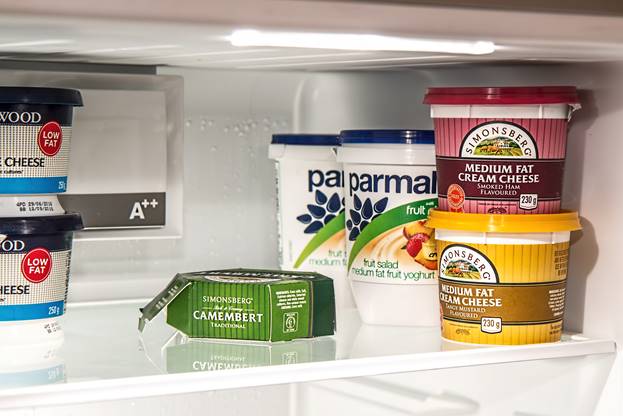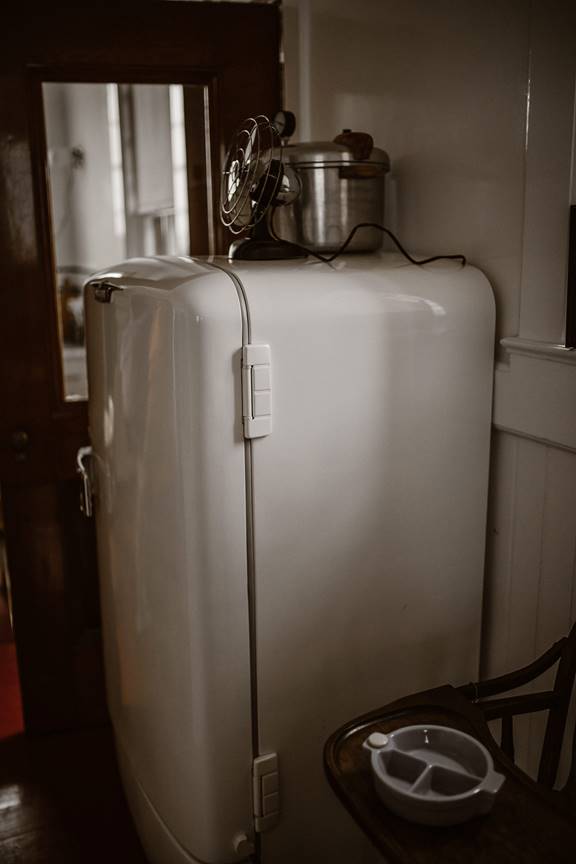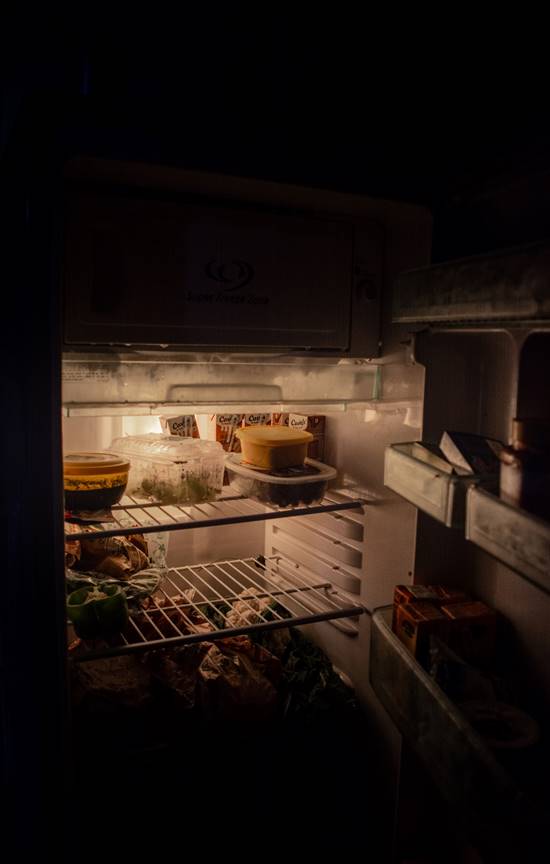Car Fridges
3-way RV Fridge Vs. 2-way RV Fridge- A Detailed Comparison
Absorption RV fridge, also called 3-way RV fridge, can operate on alternating current, direct current, and LPG gas. Such capability makes it ideal for taking out for a camping trip in an RV, hence the name 3-way RV fridge.
If you’re keen to learn everything about a 3-way RV fridge in comparison to a 2-way RV fridge, don’t hesitate to read this article until the end for endless information.
What Are 3-way And 2-way RV Fridges?
Let’s begin with learning about 3-way and 2-way RV fridges. Both 3-way and 2-way RV fridges are a compact design of any household fridge with an absent compressor. The cooling technology is fairly different from a regular fridge, making it suited for carrying them to the camping site in a recreational vehicle.
It’s absolutely safe to store any general food items and beverages in your RV fridge. However, opening such a fridge too often isn’t advisable, or else you’ll experience extensive loss of cooling in your RV fridge.
3-way RV Fridge
The appearance of a 3-way RV fridge is similar to a regular household fridge. However, there’s no compressor in this fridge, and it can run on three different power modes, i.e., 12v or 24v DC, 240v AC, and LPG. Campers can power their RV fridge directly from their RV batteries. Another reason why it’s called an RV fridge is its compact size. These fridges can potentially fit into most recreational vehicles, giving campers a way of carrying cold items to their camping site.
If you’re worried that your 3-way RV fridge might completely drain your RV’s batteries, no worries because you’ve got 240v AC and LPG option to power it up. The fridge cannot cool down the contents when running at a 12v battery. Instead, it’ll maintain the temperature inside, so it’ll be beneficial for you if you cool down your 3-way RV fridge by running it on AC power for a while before switching to DC power.
2-way RV Fridge
A 2-way RV fridge has a few limitations over a 3-way RV fridge. As the name suggests, a 2-way fridge will work on alternating current and LPG. Unfortunately, there’s no way you can power it up using your RV batteries. This leaves campers with no choice but to arrange for LPG since 240v AC isn’t always available at the camping sites.
The appearance is pretty similar to a household fridge and a 3-way RV fridge. However, a range of designs is available in the market. You’ll find large 2-way fridges as compared to 3-way fridges in the market.

How Do RV Fridges Work?
As stated previously, RV fridges are way different from any household fridge. They’re not so efficient when it comes to cooling the contents due to a completely different cooling technology adapted by RV fridges. While the 2-way RV fridge and 3-way RV fridge follow the same cooling approach, here’s a breakdown of how each of them works.
Both 2-way and 3-way RV fridges work on absorption gas, which gives them the name “Absorption Refrigerator.”
A 3-way RV Fridge
Your 3-way RV fridge will utilize hydrogen, water, and ammonia (otherwise called a refrigerant). When the refrigerant reaches its boiling point (zero degrees Fahrenheit), it’ll evaporate, and the evaporation removes all the heat from your fridge.
Next is the absorption stage, where the absorber absorbs the evaporated refrigerant, creating enough room for more ammonia to evaporate. The absorbed gas is transferred to the condenser, where the refrigerant (in the form of vapors) gets condensed. The condensed vapors are now in the form of liquid, which is transferred to the evaporator.
In the next stage, the liquefied ammonia mixes with the hydrogen gas, which reduces the pressure inside the evaporator, causing ammonia’s boiling point to reduce. As the pressure reduces inside the evaporator, the heat gets removed from it, resulting in a temperature drop. To initiate this cycle, you’ll need some sort of power source such as electricity or propane gas.
A 2-way RV Fridge
In these fridges, ammonia (a refrigerant) is present in the generator along with water. The generator heats up the ammonia until its boiling point. As the solution heats up, it reaches the separator in the form of vapor, where ammonia and water get separated.
The water goes to the absorber while the refrigerant goes to the condenser. It’s the duty of the condenser to cool down the refrigerant in the vapor form to liquefy it. The liquefied refrigerant gets transferred to the evaporator, where it mixes with the hydrogen gas. The mixture results in refrigerant evaporation, but the process eliminates heat from the chamber to cool down the contents.
Both refrigerant and water now flow back to the generator to repeat the process. In a 2-way RV fridge, either electricity or propane is responsible for heating up the refrigerant and water solution present in the generator.
To make your 2-way RV fridge use electricity, switch it to “auto” mode, and it’ll utilize 120v AC power to cool your food and beverages. However, you need to plug in your fridge when using “auto” mode, or else it’ll use propane if it remains unplugged.

Advantages And Disadvantages
Now that you’re aware of the 2-way RV fridge and 3-way RV fridge in addition to their working let’s switch to advantages and disadvantages associated with each of them.
3-way RV Fridge
Clearly, a 3-way RV fridge holds major advantages over a 2-way fridge since it can be powered up with 12v or 24v DC power.
Advantages:
- A 3-way RV fridge can operate for up to 20 days or even more on 9Kg gas. This reduces the burden of carrying more gas on a long camping trip. Additionally, it eliminates the need to refill the gas more often, letting you enjoy your trip.
- Since there’s no compressor present in these refrigerators, their operation is super quiet. Quiet operation aids good sleep in the congested RV.
- 3-way RV fridge has low maintenance. The main part in a fridge that demands maintenance or replacement is its compressor unless the body is all good. The compressor’s absence lowers the need for maintenance.
- Any 3-way fridge can be expected to last for up to 20 years if well cared for. Manual abuse and improper use can, however, reduce its longevity. Moreover, don’t expect the body to perish anytime soon.
- You can enjoy excellent service at several places, which means that there are tons of technicians out there who can take care of any issues and faults in your 3-ways RV fridge. Spare parts are easily available too.
Disadvantages:
Surprisingly, there are a few cons as well, which you must be aware of.
- These refrigerators must be installed only by a licensed and qualified gas fitter. Self-installation is life-risking and voids the warranty. In some places, self-installation is not only dangerous but also illegal.
- These fridges may prove to be inefficient in extremely hot areas, leading to failed cooling. Tropical regions, Northern Australia, and areas located near the equator are some regions where any 3-way RV fridge may fail to cool the contents.
- Running the fridge on RV’s battery power while the vehicle stays stationary will drain the battery sooner than expected. To avoid this mishap, switch to alternate methods.
- DV power is merely enough to keep the contents cool. It cannot generate excess cooling, which means that when operating on DC power, a 3-way RV fridge can only maintain the internal temperature.
- The product is slightly expensive than any 2-way fridge.
2-way RV Fridge
Advantages:
- You’ll find a variety of designs and sizes, unlike 3-way RV fridges, which are quite compact.
- The fridge can be placed on uneven terrain without worries. They can operate well while tilted up to 30 degrees.
- They have a quiet operation pretty similar to a 3-way fridge.
- Any 2-way RV fridge will function amazingly since it’ll either run on AC voltage or propane gas. It can cool down the contents quickly, provided that the ambient temperature is controlled.
- It’s not always compulsory to have a 3-way RV fridge in your vehicle, especially if you can manage AC current or propane. This means that you can buy a 2-way fridge instead of a 3-way fridge, which will help you save money.
Disadvantages:
- Using a 2-way RV fridge while driving poses a high risk of catching fire. However, this phenomenon is rare, still quite risky.
- It’ll need proper ventilation for the unit to operate properly. Running the fridge in an enclosed area is highly dangerous.
- The ability to cool the contents is highly governed by the ambient temperature, which is the internal temperature of your RV.
- The product isn’t suited for long camping trips. Most people prefer a 3-way fridge over any 2-way fridge for long trips.
- Running out of propane raises the chances of food getting perished since AC power is difficult to find at remote locations.

Which One To Buy- 3-way RV Fridge Or 2-way RV Fridge?
Now that you’ve learned a few pros and cons of both a 2-way RV fridge and a 3-way RV fridge, you must be eager to know which one to buy. Each has its advantages and disadvantages in a given environment, and you might still be unable to figure out which one to buy. Don’t worry because this section will help you make a decision.
To make an efficient decision, let’s look at what things or factors you should consider in each model before buying.
Things To Consider In A 3-way RV Fridge
Here’s a list of things you should consider if buying a 3-way RV fridge.
1. Brand
A well-trusted brand is highly crucial since it guarantees quality and value for money. Going for cheap brands can help you save money but isn’t so financially viable in the long run. Moreover, cheap brands tend to use poor quality raw materials for body manufacturing along with poor conductivity in their PCBs. Users, as a result, are likely to face faults and issues in the long run.
Norcold is one such preferred brand when it comes to a 3-way RV fridge. It’s suggested by several buyers guide such as rvkingknowhow, whereyoumakeit, etc.
2. Size
Size is an important factor since buying an oversized model will leave you with less room in your recreational vehicle. Before buying any fridge, measure the size of the area where you’re thinking of installing the fridge. Consider extra free space surrounding the fridge.
A correct size judgment is important, and based on your measurements, go for the right product suited for you. By size, we mean to say the external dimensions (Height x Width x Height) of the product, which is completely different from the internal volume.
3. Freezer
Some 3-way RV fridge has a built-in freezer, while some don’t. If you need a freezer, then go for such a model, or else there’s no point in spending additional money for a built-in freeze that you won’t use.
4. Appearance
Appearance matters a lot, especially if you want to enhance your RV’s appeal. Going for a standard and regular model can help you save a few bucks on the product. However, fancy, trending, and sleek designs will make you shed extra bucks just for their looks. Be specific whether you prefer appearance over money.
5. Internal Volume
The internal volume will be far less than the exterior dimensions. Ensure asking the salesperson about the internal volume as indicated by the manufacturer. The internal volume is an important aspect to take care of when buying an RV fridge.
Check for the compartments, shelves distribution, and storage space. Is there space to store eggs? Can you put veggies and meat on separate shelves?
6. Warranty
Check how much warranty you’re going to get on your product. Different manufacturers offer different warranties, and their clauses for warranty claims are different from one another. Some sellers give an additional extended warranty for a few extra bucks. Do you need that? If not, then don’t waste money on that.
7. Price
Price or the budget is an important factor. If you’re on a tight budget, you might consider compromising on the looks and go for a simple model. Consider going for an entry-level model, which is designed especially for low-budget buyers.
Things To Consider In A 2-way RV Fridge
1. Brand
Once again, Norcold is favored by several buyers’ guides when it comes to a 2-way RV fridge. Domestic Americana and SMETA Electric are other options to prefer.
2. Body Material
Body material options can include metal body and plastic body or a combination of both. A plastic body is least preferred due to low life expectancy. Products made of steel bodies are, however, quite expensive, and you might want to stick with plastic or aluminum body product if budget is an issue.
3. Additional Features
Additional features in a 2-way RV fridge can include a control panel, Wi-Fi connectivity, LCD display, auto frost limiting feature, ice maker, etc.
4. Ease Of Access
Check if the product is easy to use. Some models prove to be unfriendly with the user, especially the old aged people. The ease of access is determined based on the control panel and how easy the settings are.
5. Price
Models without a freezer or special features discussed above will be cheaper than fancy models. Moreover, the same 2-way RV fridge might be available at different prices with different sellers. Ensure that you perform rigorous market research.
6. Right-handed Design
Depending on the available space in your RV, you might want to consider if the door opens to the right or left. This factor might be insignificant for some buyers, but those with limited space should consider this factor.

Can I Convert A 2-way RV Fridge Into A 3-way RV Fridge?
Are you looking to convert your 2-way RV fridge into a 3-way? Fortunately, that’s possible, as suggested by rvblogger. You’ll need a dedicated inverter, which will be installed by mounting it behind the fridge. Now you need to adjust the wiring and add switches to the existing circuit. You’ll also need an appropriately sized battery bank.
Please note that DIY isn’t as straightforward as it sounds. You need to consider things such as choosing the right inverter and battery pack. Furthermore, finding the correct circuit for rewiring is a tedious task. The conversion invites additional hassle and disadvantages:
- The fridge will now consume more power since it’ll be powering the inverter.
- Mounting the inverter will demand drilling in the body. Incorrect drilling will damage the fridge’s body.
While DIY is a hassle, there’s no problem in getting your 2-way fridge converted to a 3-way fridge by a professional expert.
RV Fridges- Dos And Don’ts
Please take care of a few dos and don’ts associated with your RV fridge, whether 2-way or 3-way, as suggested by thewanderingrv.
- Turn on the fridge overnight before your camping trip.
- Avoid storing warm or hot items. Store only cool and chilled items in the RV fridge.
- RV fridge fan is an accessory that you can install in the compartment to circulate cool air inside. Results include reduced cooling time by up to 50%.
- Open the fridge only when required. Avoid opening the door too often and for a long time.
- Place a clinical thermometer to track the internal temperature, so you know if you’re using the fridge the right way.
- It’s recommended to defrost your fridge once every month or two.
- The outside vents must be under a shade when parking your RV.
- Double-check the fridge and its front and rear vents prior to your camping trip.
Takeaways
It’s safe to conclude that a 3-way RV fridge holds superior benefits over a 2-way RV fridge. However, the pros and cons suggest that it’s advisable to opt for a 2-way RV fridge if 3-way isn’t so necessary. Since an RV fridge adapts the absorption gas technology to cool down things, buyers should avoid compressor-based RV fridges.

